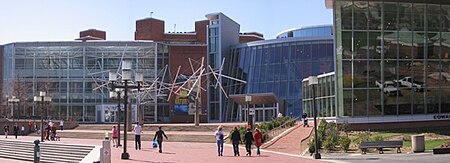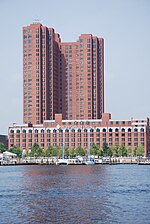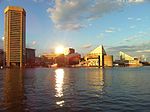Maryland Science Center

The Maryland Science Center, located in Baltimore's Inner Harbor, opened to the public in 1976. It includes three levels of exhibits, a planetarium, and an observatory. It was one of the original structures that drove the revitalization of the Baltimore Inner Harbor from its industrial roots to a thriving downtown destination. In 1987, an IMAX theater was added, but the museum continued to show its age as the end of the 20th century approached. In May 2004, a large addition to the property was opened, and the modernized hands-on exhibits now include more than two dozen dinosaur skeletons. Subjects that the center displays include physical science, space, and the human body. Maryland Science Center won a 2006 Best of Baltimore award for "Best Place to Take Kids." In 2008, the Maryland Science Center was named one of the “10-Best Science Centers for Families” by Parent's magazine.
Excerpt from the Wikipedia article Maryland Science Center (License: CC BY-SA 3.0, Authors, Images).Maryland Science Center
Light Street, Baltimore
Geographical coordinates (GPS) Address Phone number Website External links Nearby Places Show on map
Geographical coordinates (GPS)
| Latitude | Longitude |
|---|---|
| N 39.281388888889 ° | E -76.611944444444 ° |
Address
Maryland Science Center
Light Street 601
21230 Baltimore
Maryland, United States
Open on Google Maps







